Long-Term Support Release 11
Every 6 months, Tulip releases a new Long-Term Support (LTS) version of the platform for Enterprise organizations to validate before rolling into production. LTS 11, the latest version of Tulip, introduces improvements to platform performance, navigation, and functionality, as well as new features like MQTT as a data source, AI App Translations, and more.
For Tulip customers who are not subscribed to an LTS cycle, these features have rolled out biweekly, in our usual platform releases.
See the latest release notes →
Improved Analytics
The Analytics Editor has received several UI and functional improvements to help you build charts faster.
New Analytics Editor Sidebar

Formatting, Layers, and Alerts have been condensed into an easily accessible sidebar that can be collapsed to expand the view of your analytics.
Chart titles and subtitles can now be toggled on and off via the sidebar for all visualization types.
You can also now create and edit analyses directly from analytics widgets in apps and the dashboards page!
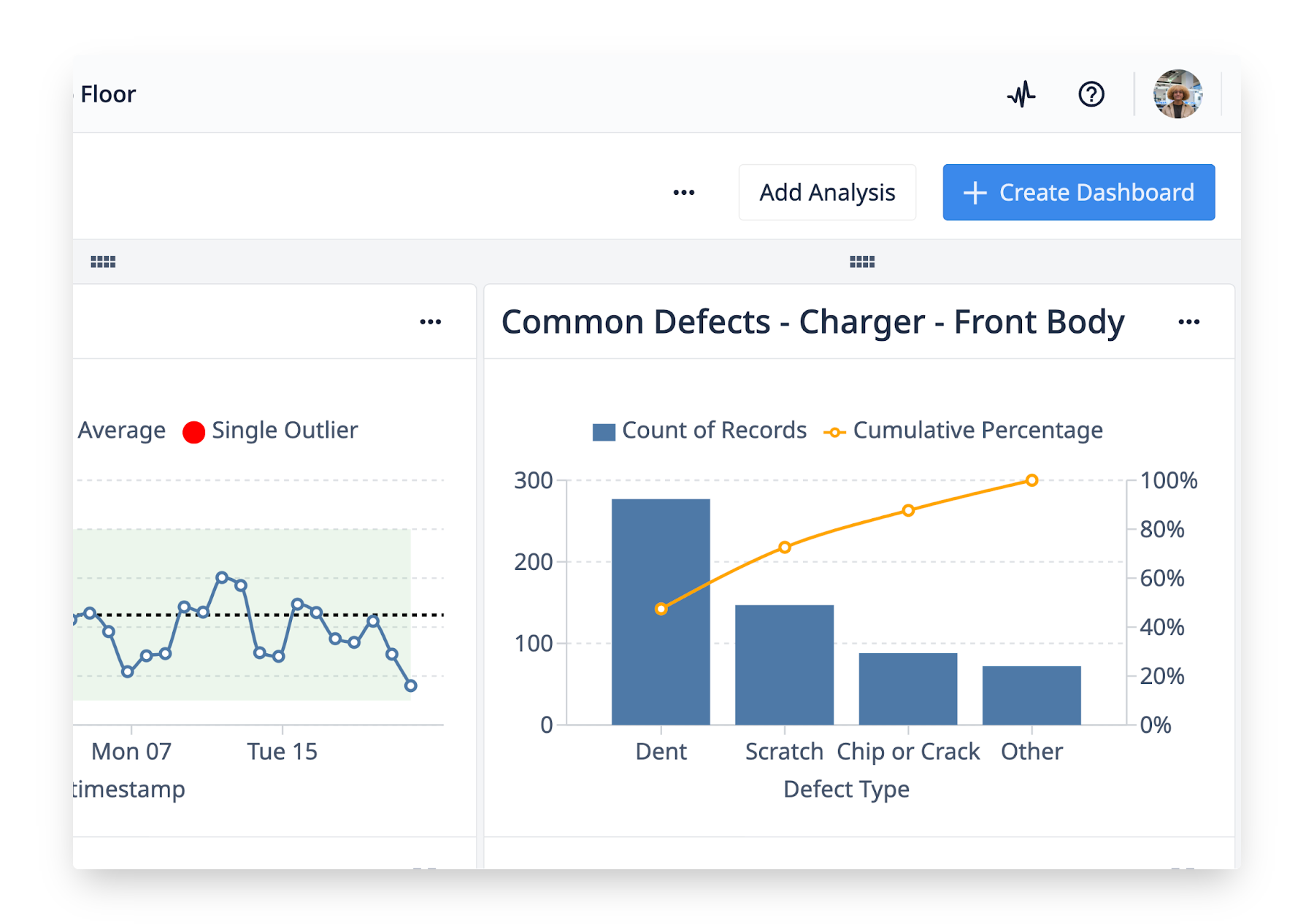
Reference Line Layer
The Reference Line layer allows you to display a horizontal line on charts. Values that are above or below the line are highlighted in real-time for immediate identification. Out-of-reference data can trigger an email alert that can be sent to assigned users. This enables supervisors to monitor production more efficiently, and quickly address potential issues before they impact production.
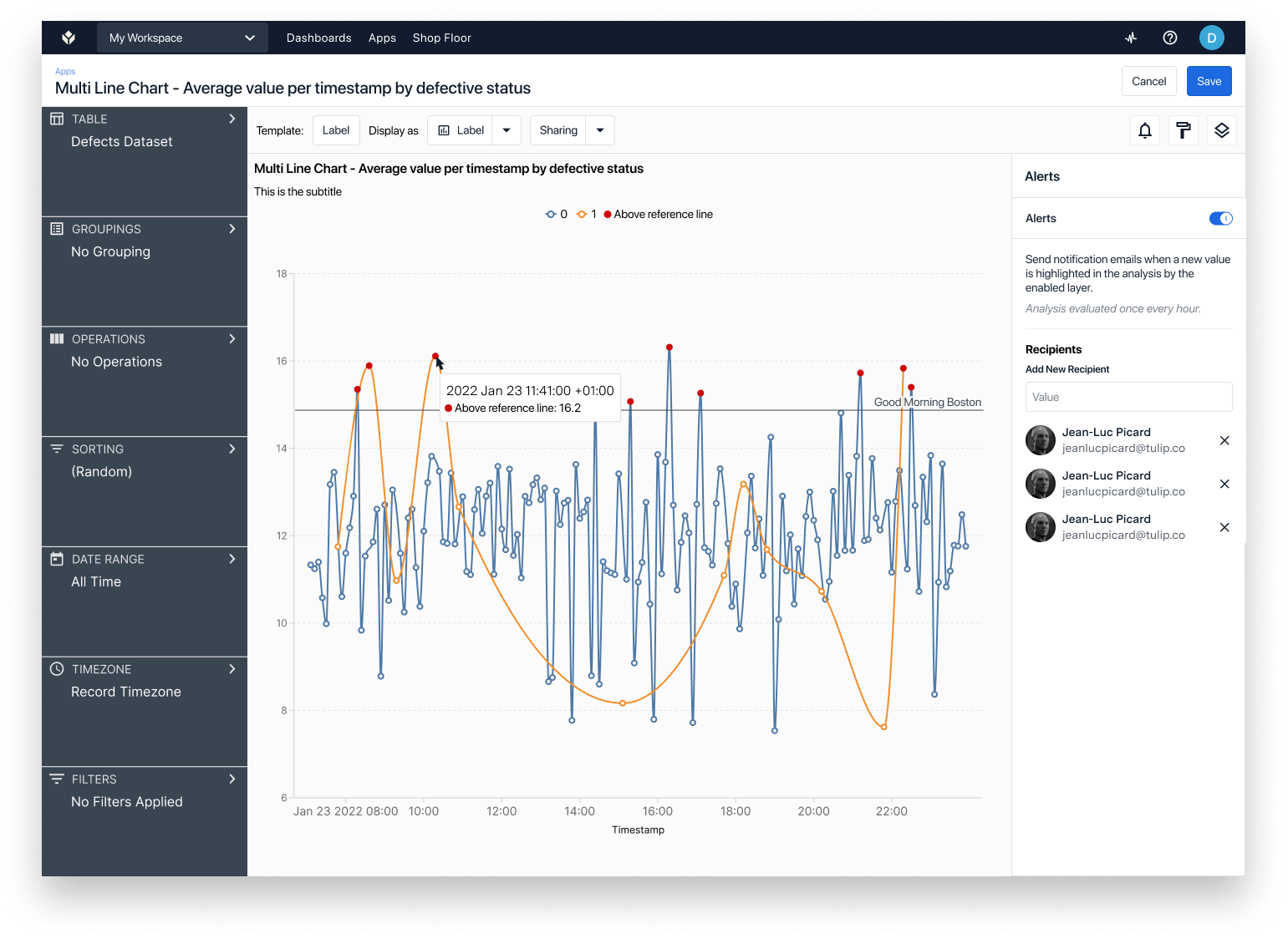
Moving Averages are Now Available in the Trend Line Layer
You now have the option to add a Moving Average Trend Line Layer for a specified period to Line Chart, Bar Chart, and Scatter Chart visualizations.
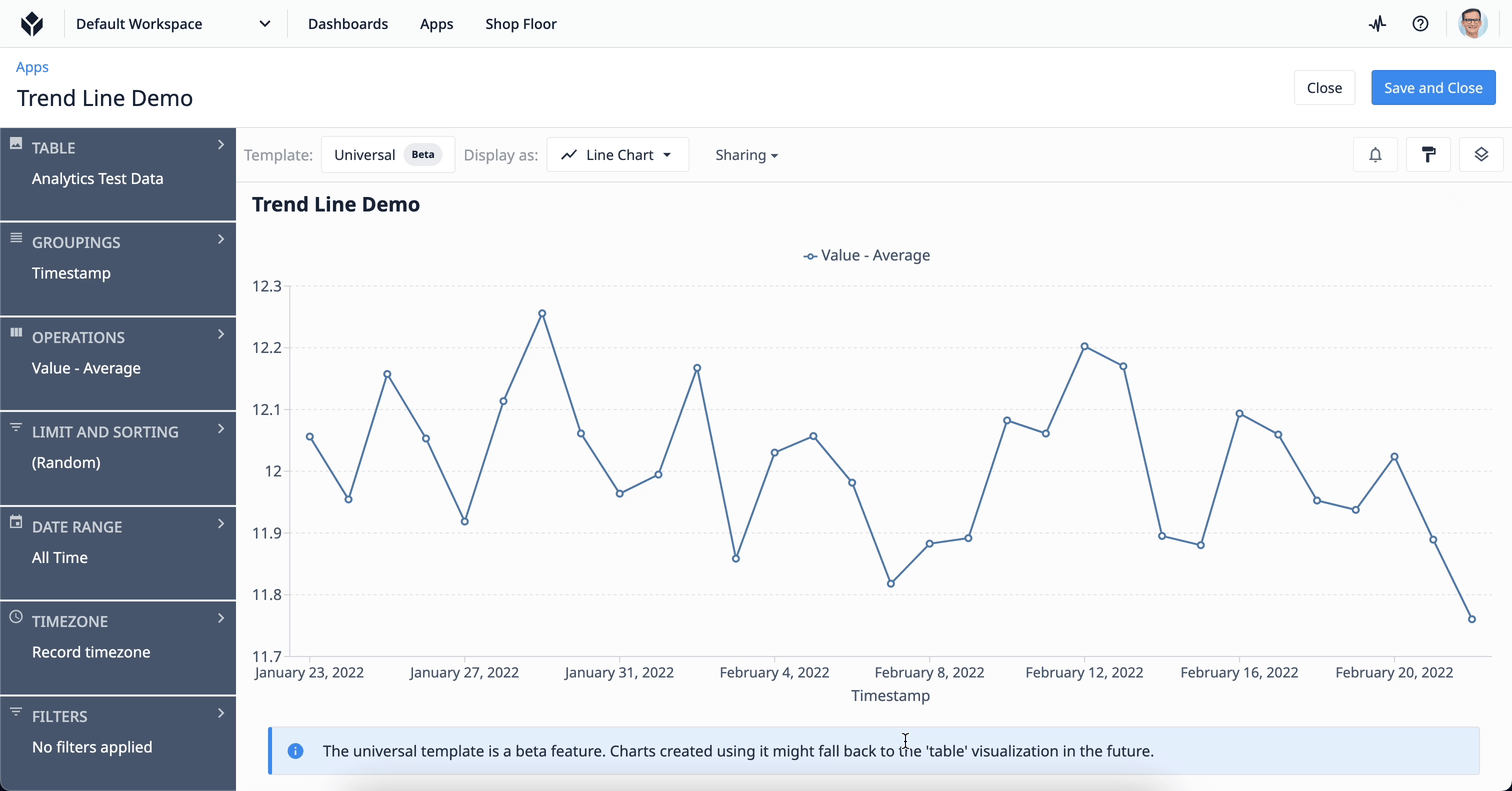
Layers Support for All Analytics Data Types
Charts built with machine and app data now support layers, just like charts with tables.
X-Axis Grouping
The "Group By" feature for timestamps is now available for the table template as well. This enables users to group timestamped x-axis analysis without requiring expressions. This enhancement makes the functionality more user-friendly and easily accessible.
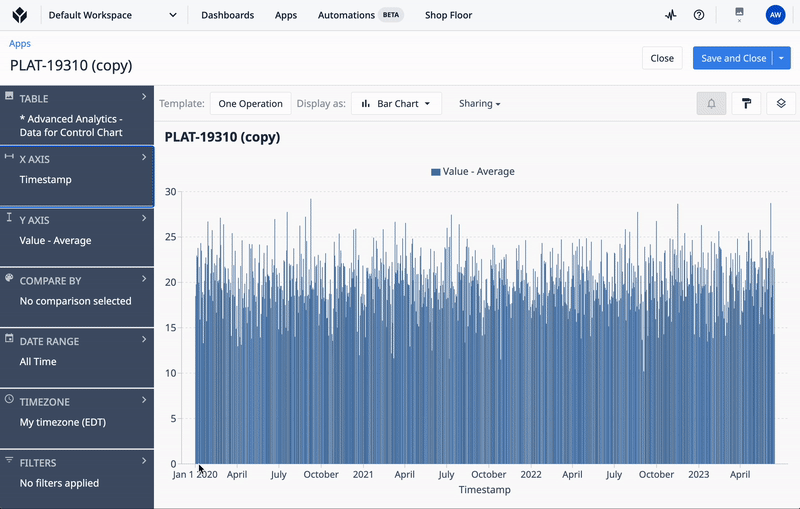
Connect to Machines with MQTT
Tulip supports HTTP, SQL, and OPC UA communication protocols that have allowed our users to connect to different devices, machines, and equipment.
MQTT is now available as a native machine data source. Users will be able to connect to an MQTT broker from Tulip and subscribe to topics. MQTT as a data source will be available to all customers who use Tulip’s Machine Monitoring capabilities. MQTT is an efficient IoT messaging protocol that enables reliable communication between Tulip and your devices and equipment using minimal resources.
Watch the video below to learn more and leave your feedback on MQTT with Tulip here.
Improved Multilingual Support
Even More Languages
We've expanded our supported languages by adding Korean, Norwegian, and Ukrainian for applications and the platform language, enhancing the user experience for global users.
AI App Translations
We are excited to extend the multilingual apps feature with new AI-powered translations. AI translations allow you to automatically create multilingual versions of your apps in the 29 supported languages in Tulip. This significantly reduces the time spent manually inputting app translations, enabling you to build apps for your operators quicker, in their preferred language.
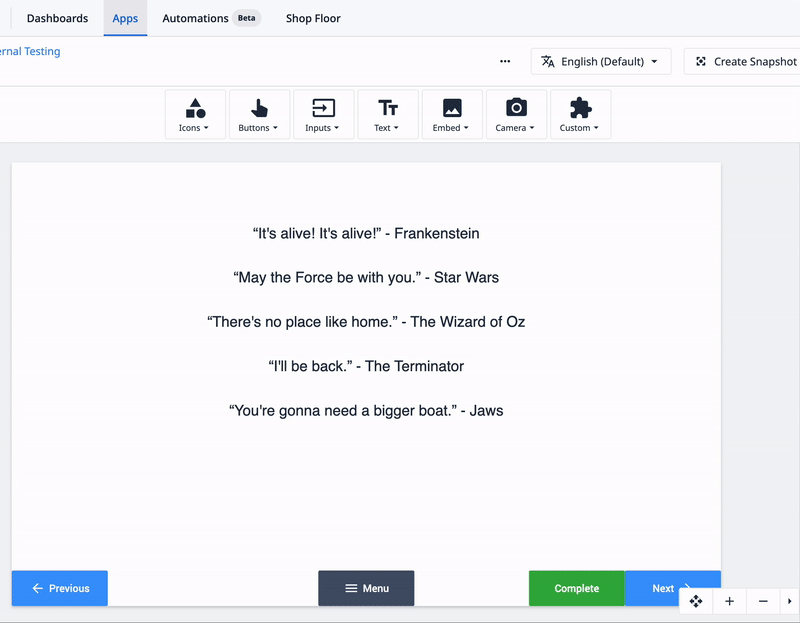
The Signature widget now supports multilingual translations as well.
UI Revamp
A New Look to the Platform
The Tulip platform has a new look and feel in LTS 11. You will notice the header, components, and fonts across the platform have been updated. These changes are purely visual and there will be no changes to fonts used in your Tulip apps.
In addition, we have made updates to improve platform navigation, including new labels, notifications, tooltips, modals, and helper text.
New Apps Page
We have made many improvements to the Apps page, to improve navigation and performance. You can now scale your Tulip deployments to thousands of applications with negligible performance impact. We have dramatically improved the search functionality on this page and added an app preview pane to see app details in moments. A new shortcut has been added to open apps in the App Editor directly from the app list.
The default view for the new apps page now displays a list of up to 50 of your most recently viewed apps.

New Button Icons
We have added brand new icons for buttons that represent different types of operations.
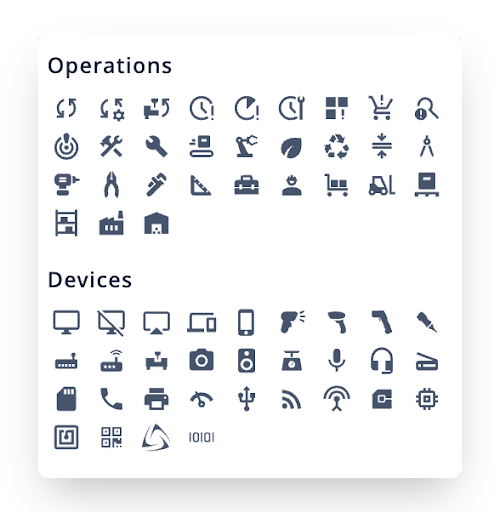
We have also added search functionality to the icon selection picker so you can now easily find the perfect icon to improve your App design.
![]()
Uptime Visualization Graph
We have updated the uptime visualization graph used for both Connector Hosts and Display Devices. When hovering over the graph, context for what each color means will now appear more clearly, as well as start and stop and duration of the state. Additionally, this new visualization is more accessibility friendly for the color blind.
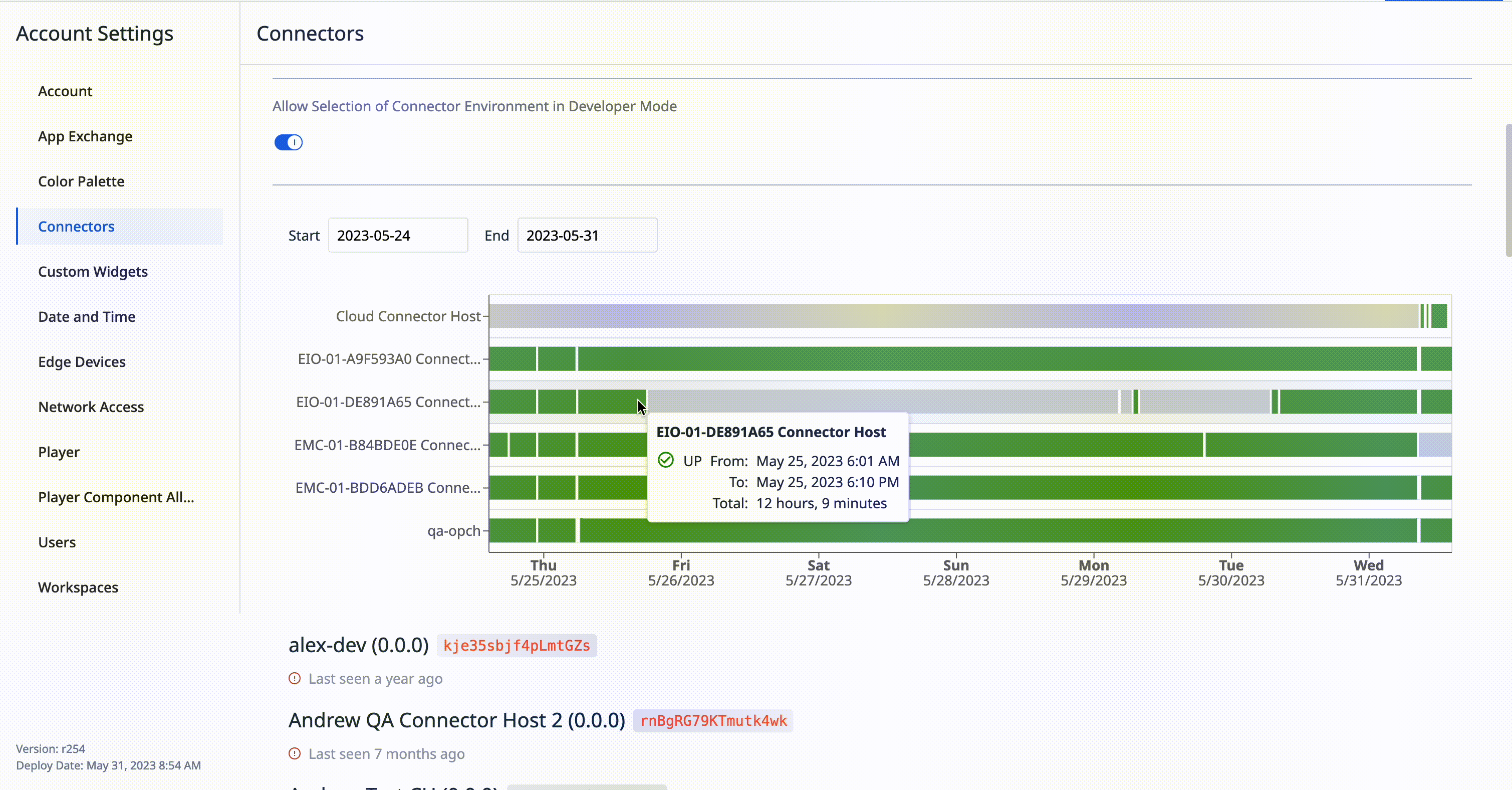
In addition to the aesthetic changes, we’ve improved performance across the entire platform. Some areas to note include faster page loads in the trigger editor, triggers with ZPL functions, and machine monitoring, and improved load times in Analytics.
Users, Account, And Settings
Account settings have received a visual update alongside the rest of the platform. Setting menus are now sorted in alphabetical order.
Updates to User Pages
For users that are assigned to multiple Workspaces, the role field on the User page will show the count of hidden roles for the user. When you click into an individual user’s profile page, you can now see the Active Workspaces they are assigned to with the associated role type. The account owner toggle has been moved to the top right of the individual user’s profile page which enables user access to all Workspaces and Account Settings.
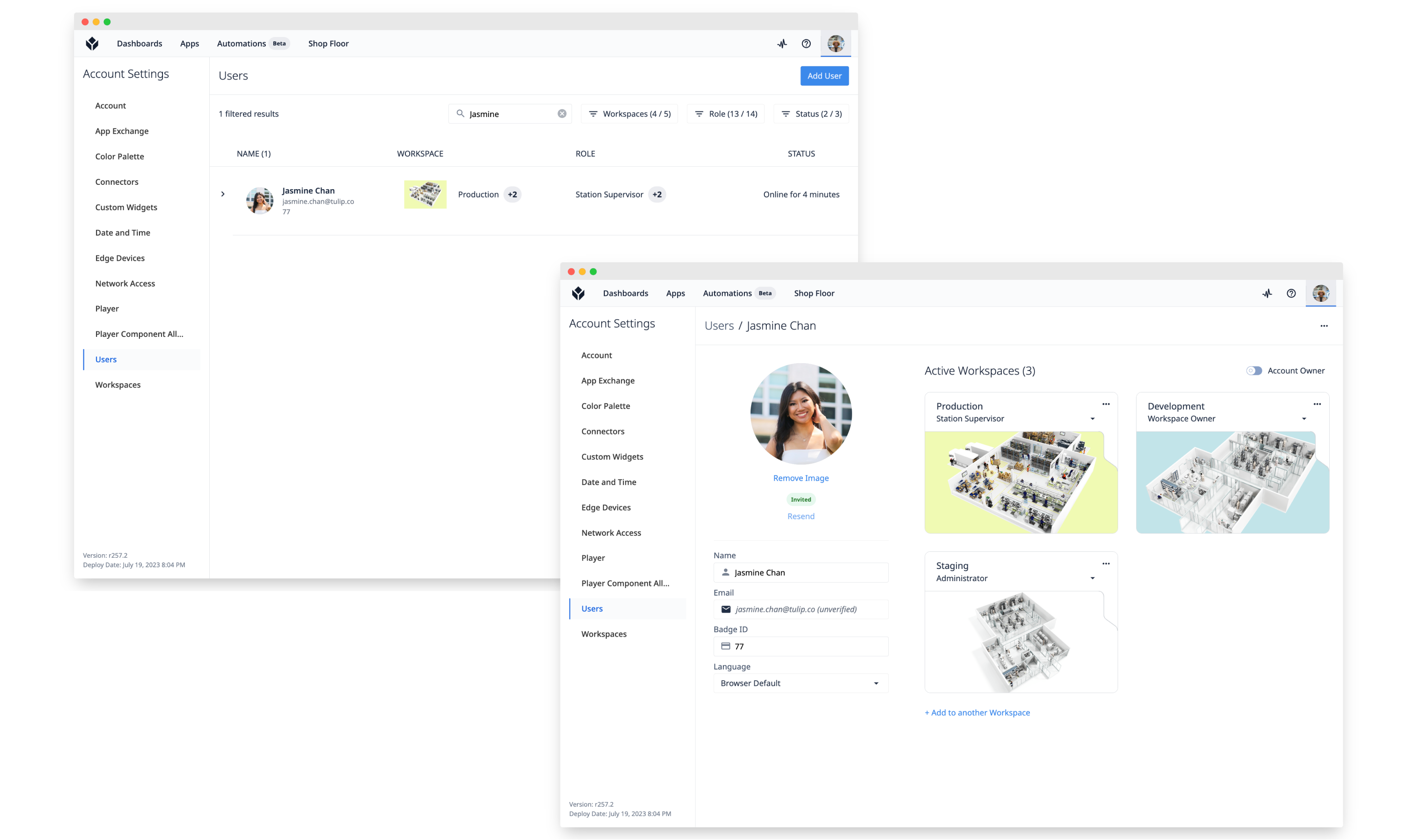
Email Address is Now Optional for Operator Roles
To make it easier to get operators up and running with Tulip, and match the way your operation may be set up, we are now making email addresses an optional field for Operator user roles.
Vision
Shift and Click to Select Multiple Regions
Multiple regions can now be selected and common properties can be edited across all selected regions, streamlining the process to make bulk changes to multiple detectors.
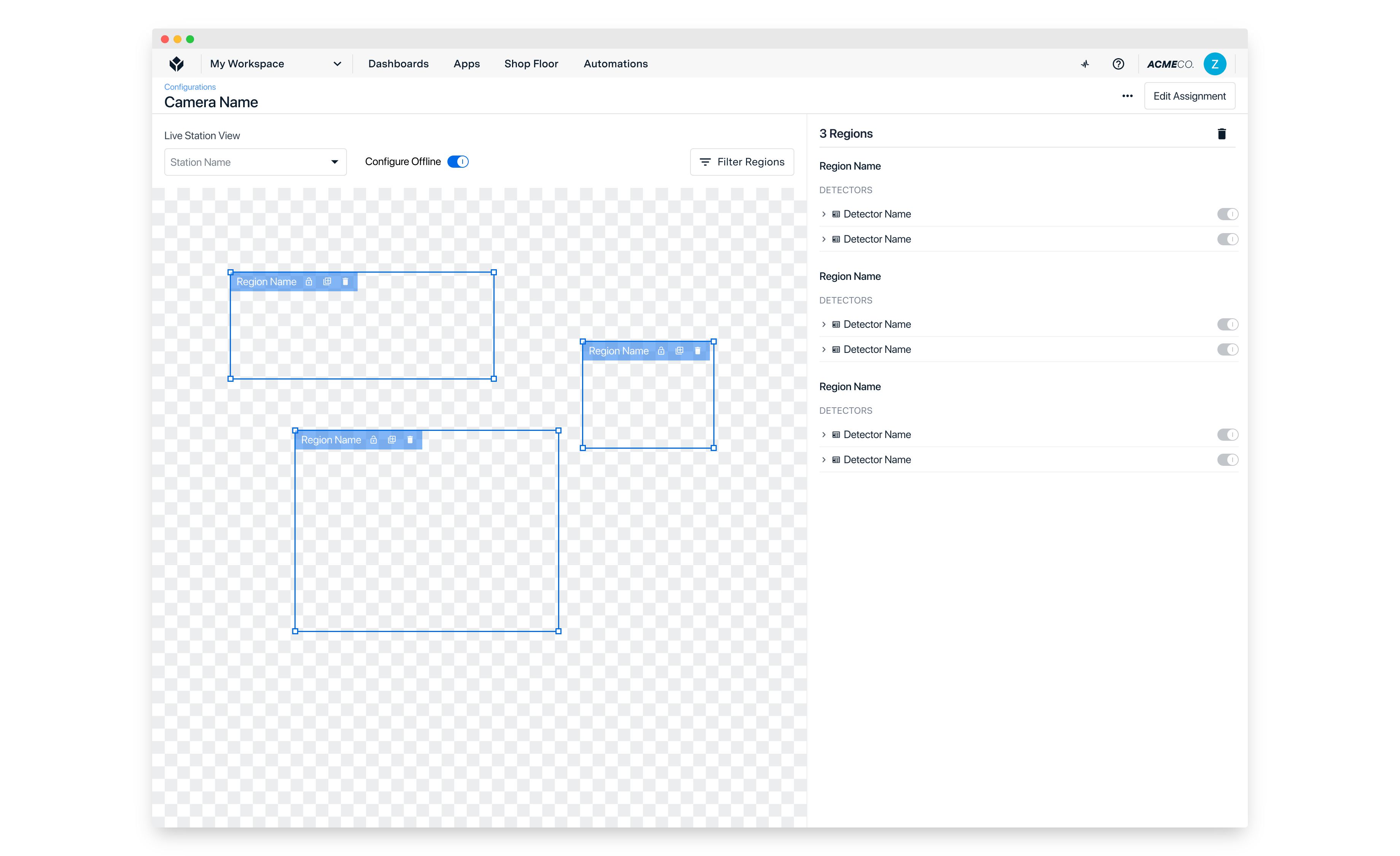
The Little Things
Quick Connectors
Just like apps, Connectors from the Tulip Library can now be accessed easily when creating new content. Start with common connector functions to common systems to streamline the integration process.

Barcode Scanner Configuration Options
Configuration options to the Optical Barcode Scanner widget to adjust the area of the camera feed being scanned for barcodes to better match the aspect ratio of your barcodes.
Improved Serial Triggers in Player
Triggers using Serial device functions in Player now have expanded functionality. Users can configure data bits, stop bits, parity, and flow control within the trigger editor.
Trigger Error Handling Improvements
We've refined the trigger error handling options in the App Editor. This change makes it easier to understand the behavior of an application when a trigger error occurs. Users can choose to have the application either stop the remaining triggers or continue. This option is now only visible when multiple triggers are configured. This can be configured separately for different trigger types (e.g. On Step Enter, Timers, etc.).
API Tokens Functionality Improvements
Previously known as Bots, API Tokens can now be archived to manage outdated credentials easier. Additionally, API Tokens can be copied to a clipboard in one click.
Most Recently Published Version App Data
We have added "Most Recently Published Version" as an app info variable to be used as a data source with widgets, triggers, and in the Expression Editor. In the Expression Editor, you can return the latest version available of an app using "@App Info.App Version.Most Recently Published Version".
New Ways to Give Feedback to Tulip
A new feedback survey has been added in the Support Activities Menu to rate your satisfaction, share insights, and suggest your improvements. Be honest and specific! We welcome all feedback to help us improve our product.
Notices
Unassigned Display Devices
Tulip will soon start preventing unassigned Display Devices from running Tulip applications. Unassigned Display Devices can exhibit behavior that is outside of what account owners or admins can allow. Users will now see a warning on the Stations page if they have Display Devices that are not assigned to a station and are running Tulip applications. We encourage all admins and account owners who see this warning to check the status of their display devices and either assign them to a station or remove the app assignments from them.
Deprecating Triggers with Multiple Transitions
Running apps with triggers with more than one transition action will no longer be supported starting March 2024 (LTS 12), and affected apps will automatically be archived without the ability to migrate to the new transitions. To minimize disruption to your operations, start the migration process now! In LTS 11 you will see a notification for apps with affected triggers. You will be able to choose whether to automatically have the affected app utilize a new trigger or follow step-by-step instructions to change the trigger yourself. For more information, please contact support@tulip.co.
How do I learn more about LTS 11?
If your team is interested in seeing all of the latest updates in LTS 11 access the Tulip Docs or reach out to your Tulip contact for the official quality assurance report. Your customer success manager can also help you upgrade your instance to LTS 11.
Over the past few months Tulip has released several Beta features including Automations, Frontline Copilot, and Universal Template for Analytics. If you are interested in learning more about these on LTS 11, please reach out to your Tulip contact.
LTS 11 comes with the LTS 11 On-Premise Connector Host. If you are using an on-premise connector host with Tulip, this release will bring support for MQTT connections, as well as a few big fixes. If you encounter any difficulties during the update process, our customer support team is ready to assist you. Please contact them via support@tulip.co or live chat in your instance.
Tulip now offers a Microsoft Installer (MSI) version of the Tulip Player for windows systems. LTS 11 comes with Tulip Player Version 2.4.0 which brings bug fixes and performance improvements to your interfaces. Restart the Player application to be prompted to upgrade to the latest version.
